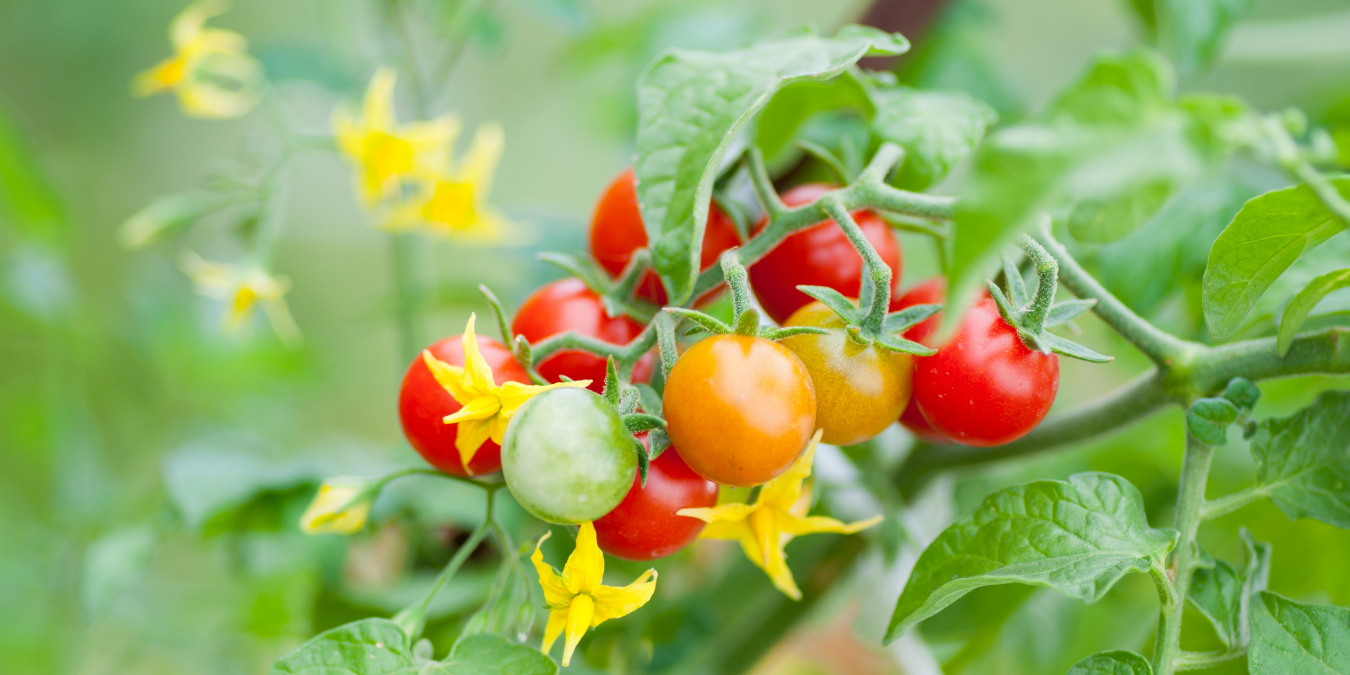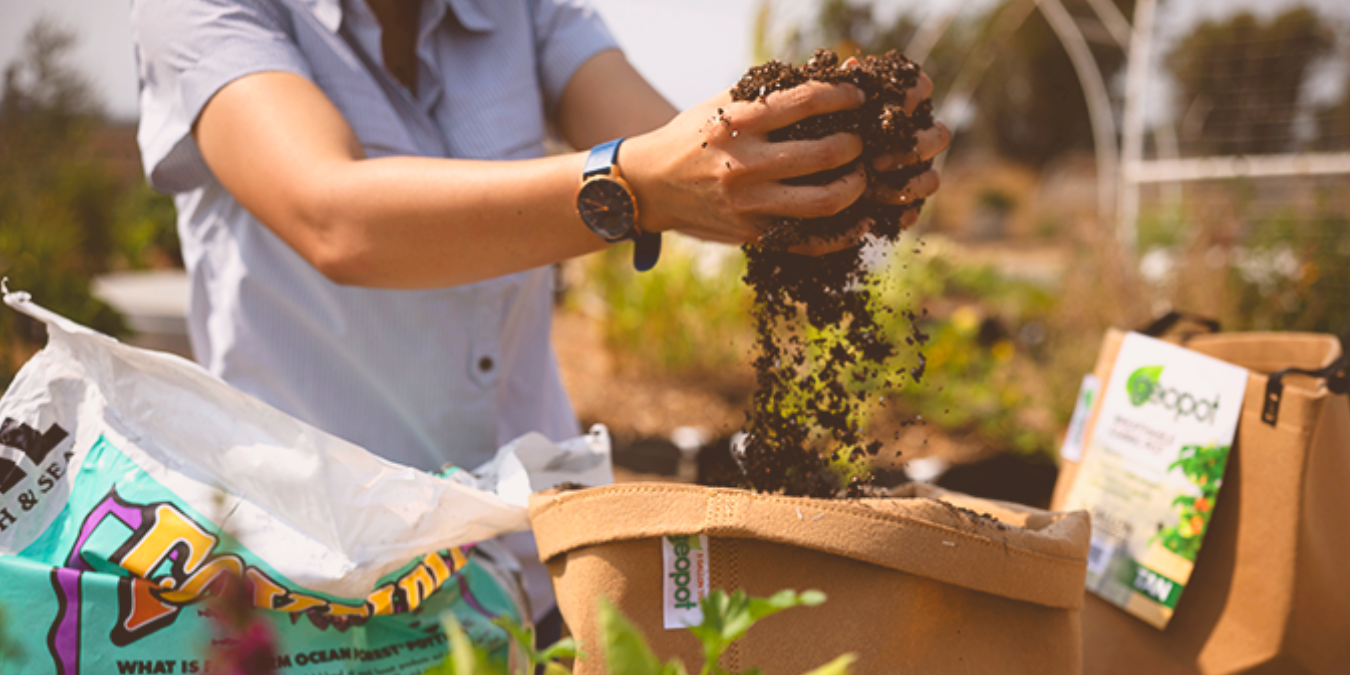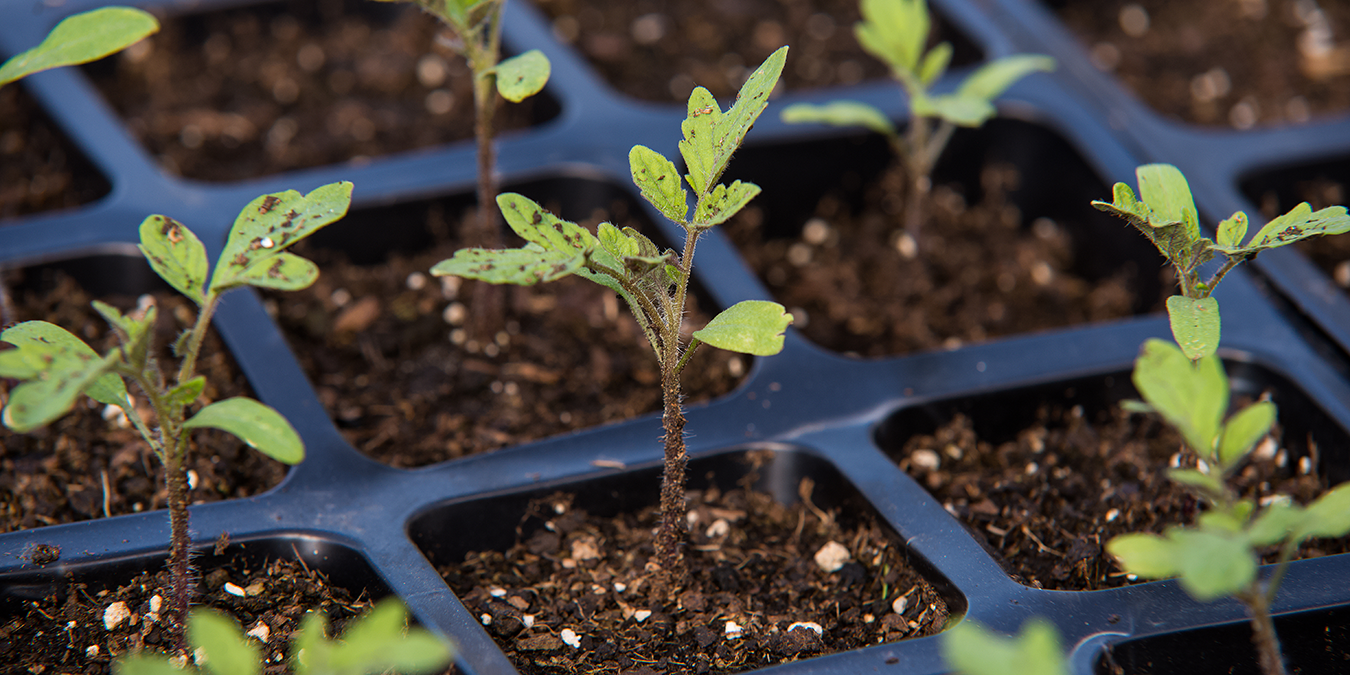Set Up a Garden Journal to Track Your Success This Year
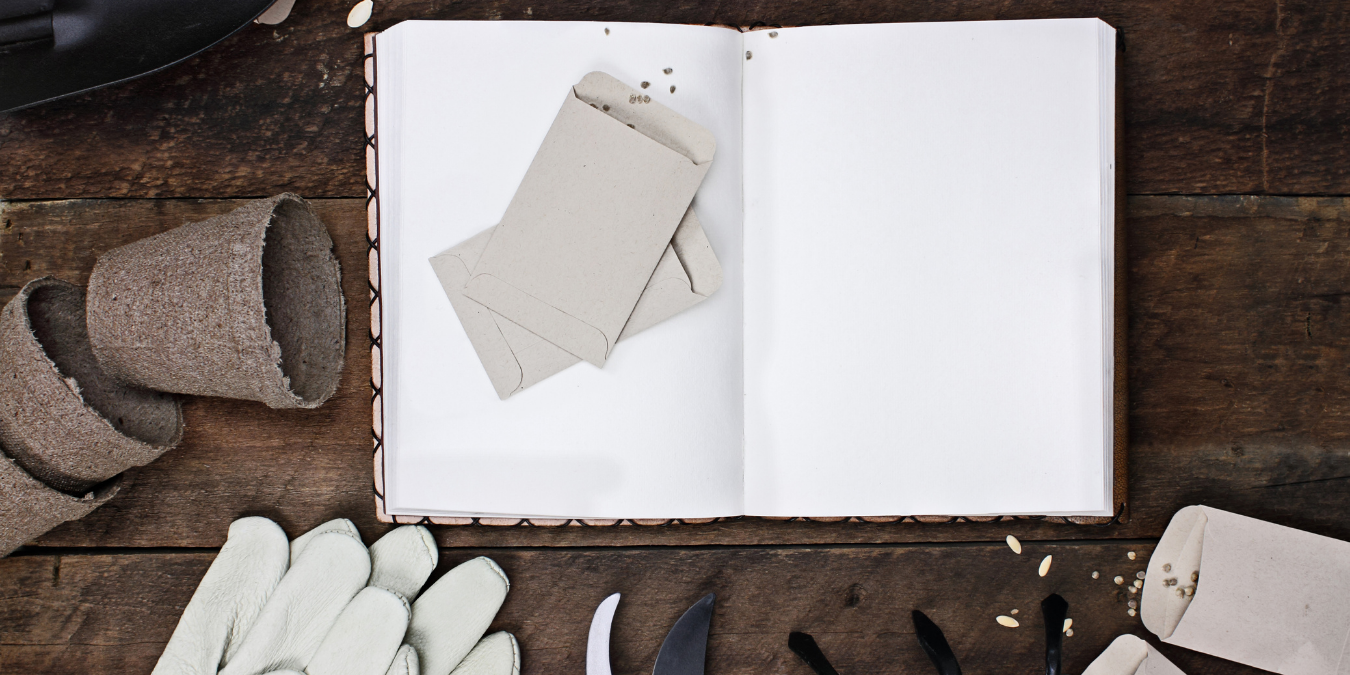
Gardening is a learning process, and some growers find value in keeping a record of their past efforts to better prepare for the upcoming season. And how do they do it? They write it all down! A garden journal is a great way to keep track of to-do lists, plant information, maintenance, and expenses, and can make your gardening more organized and streamlined in the long run. In this article, we’re going to go over the different types of garden journals, recommended sections, and tips and tricks for setting one up for yourself.
Options for Your Garden Journal
Surprise! Garden journals come in as many varieties as gardeners. Some are nothing more than simple notebooks to hold gathered scribblings and receipts, while others are mega-organized three-ring binders with dividers. Here are some forms that a journal might take:
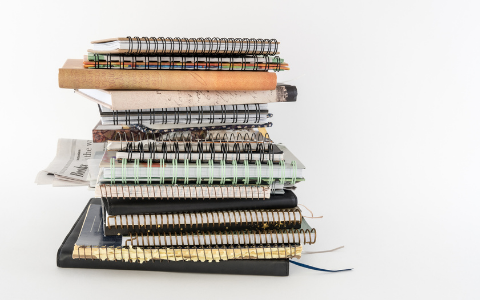
Notebook
Easy peas-y. A simple notebook of lined paper is the perfect starting point for a beginner gardener’s journal. Because it’s already bound, there’s no need to worry about losing pages, and loose papers like receipts or seed packets can be stapled or taped in where necessary. One downside to a notebook is that they aren’t easy to organize, so if you’re a gardener that likes to separate things into categories, this option may not be the best choice.
Pre-Made Garden Journal
Like planners, commercially available garden journals come in many shapes, sizes, and configurations. The benefit to these is that they’re pre-pear-ed ahead of time, so you can just purchase the journal and get started without any setup. Depending on the journal, you may be able to find one with built-in pockets for receipts, categories for notes and logs, and prepared spreadsheets for expenses. So many options! Don’t spend all your money, though! You’ve gotta get the plants, too!
Binder
A step up from a notebook and more customizable than a pre-made journal, a traditional three-ring binder is a top choice for uber-organized gardeners who want to keep a record of their grow. Because pages can be rearranged and inserted as needed, a three-ring binder is a more flexible option for a gardener who wants to separate their notes and logs into categories. Many binder inserts are available, such as pockets for receipts, clear photo pages for garden pictures and seed packets, as well as different types of paper ranging from regular lined paper for taking notes to graph paper for plotting garden beds. The possibilities with a binder are endless!
Electronic
While electronic notes and files are perhaps not as popular amongst gardeners (we like to get our hands dirty, don’t we?), they are just as flexible as a paper binder and can be less prone to loss or damage if properly backed up. Using a note-taking program like Apple Notes or Evernote, you can set up sections for your notes and logs, add in tables and charts, load in digital photos of your garden, and copy links to resources into your notes for easy access. There are even some gardening journal apps! Whaaaat. An electronic garden journal’s best feature is that it’s searchable with a quick query and doesn’t require paging through sheets of paper to look for one note you wrote down ages ago! Woohoo!
Sections to Consider for Your Journal
Deciding on the type of journal you want to have is a BIG choice, we know. It may help to know what kinds of things you want to keep track of! Knowing the sections you’d like to include ahead of time can help you decide on what type of journaling method to use, especially when it comes to commercially available options. Here are the sections that we recommend you consider when creating or purchasing your garden journal:
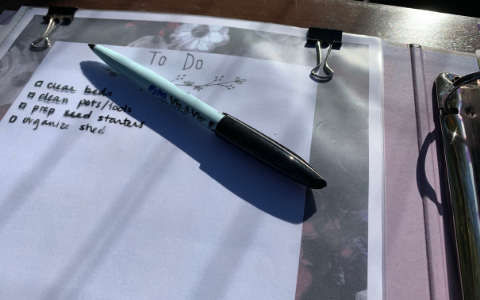
To-Do Lists and Shopping Lists
Get your to-do’s done! Garden chores, shopping lists, and to-do lists are an essential part of a gardener’s daily and weekly routines, and being able to see this information at a glance can help speed up your day. Many gardeners just write on scrap paper or post-it notes, but some go as far as to have a running list at the front or end of their garden journal for easy reference and to keep track of tasks that may take longer to accomplish.
Tip: Get fancy! One great way to create a to-do list or a shopping list that is reusable and easy to edit is to use a dry or wet-erase marker on a laminated sheet of paper–that way, your list can be updated easily without excess paper waste. These can be hole-punched and added to a binder or clipped into the front of a notebook with a paperclip. Bonus points if they’re removable–pull the sheet out and take it with you to the store when you need to pick up a few things!
Calendar
A calendar is SUPER important for any gardener, especially one that can be easily updated and viewed at a glance. Purchase one from the store or print one out at home, and use it to write down important dates such as first and last frost dates and notes on when to fertilize, weed, or harvest.
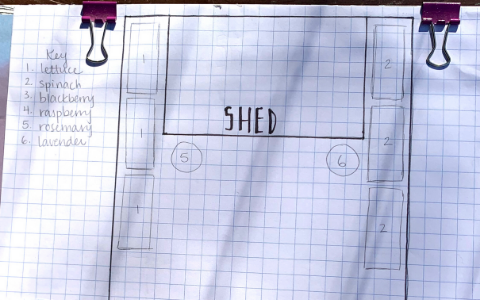
Garden Layout
Knowing your garden layout is essential for plotting where you will plant your starts and seeds, and this can be done in a lot of ways. Get artistic and sketch your garden beds onto a sheet of paper, or plug your measurements into a computer program. Just get your grounds laid out so you’re able to see the space you have for planting all on one page.
Tip: Graph paper is perfect for plotting your garden by hand. We recommend using each square as a set measurement–say 6” to 1’ in length–and measuring your garden beds as accurately as possible. Once you have the measurements and the sketch down on graph paper, you will have a standardized sheet to use to sketch in possible arrangements for plant placing based on available space. If you use a pencil, you can update your sketch as the year progresses and your plants change! This garden chart grows with your grow!
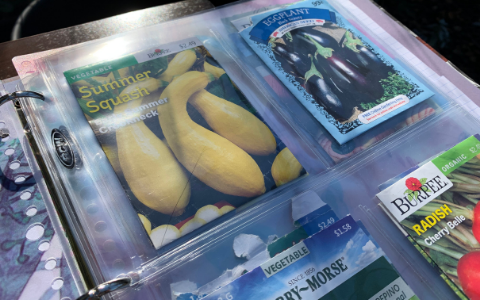
Plant Information
Be in the know so you can grow. Having your plant information on hand is critical for ensuring that your starts and sprouts get the care they need. We recommend including a section in your journal for plant details and seed packets. Some people set up a page for each major plant type (i.e., tomatoes, peas, and beans) with basic care instructions, pests to look out for, and advised harvesting methods. Since care and water needs can vary by your agricultural zone, it helps to do some research into the needs of individual plants in your area so that you can be sure to keep your green space happy and thriving.
Tip: Seed packets are essential to keep around since they often contain vital information about plant spacing, germination times, and when to expect produce or flowers. A favorite method of ours for keeping seed packets organized in a binder is to use clear photo sheet protectors and slide the packets in for safekeeping. As a bonus, this keeps any extra seeds you may have in a place that is clean, dry, and easy to find! You can even use these guys for photos of your grow, we won’t stop you.
Garden Log
Keeping a garden log is one of the main purposes of a garden journal and can be helpful for various reasons. Many gardeners use the end of the year to reflect on what worked and what didn’t in their garden, and the best way to do this is to go back and look at notes! These notes can be beneficial if you’re looking ahead at the next gardening season, too. Some of the best things to keep track of in your garden log are:
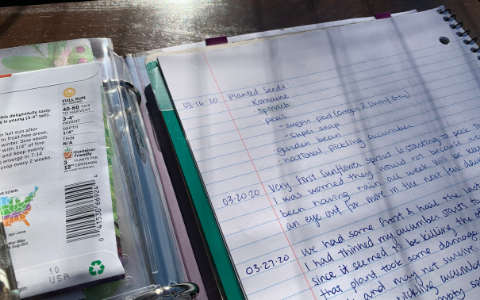
Planting Dates: Especially if you are growing from seed, it’s crucial to note planting dates in your log to know when to expect the seeds to germinate. Don’t go in unawares!
Pests: Yuck! It’s vital to keep an eye on your pests year-round, and the best way to ensure that you’re catching any patterns in pest appearance is to log them in your journal. Make a note of the type of pest, the severity of the infestation, the date you noticed them, what measures you used to prevent or combat it, and when you applied counteractive measures. This will help you kill invading pests more effectively in the future!
Fertilizing: It’s feeding time! Another essential item to keep track of in your log is fertilizer application. All plants need nutrients, but many plant nutrient requirements differ. Make a note of when you’re applying fertilizer, what brand and type of nutrient was used, and carefully monitor your plant’s response to the application so that you can fine-tune your feeding regimen in the future.
Weeding: Keeping track of how often you’re weeding can help determine if you need to switch tactics–are you using a weed killer spray that worked well on weeds but killed one of your plants? Is hand-weeding your garden too much to handle on your own? Making a note of your observations and even the type of weeds you see frequently cropping up can be incredibly helpful when planning your garden in the future.
Expenses
It’s important to keep track of your garden expenses to know how much money you’re spending on things like tools, fertilizer, and pest control. We recommend setting up a spreadsheet or table so that you can see everything at a glance, but even something as simple as a binder pocket to stick your receipts in can be good to keep everything in one place to look at later. Much later.
Tip: Even if most of your garden journal is on paper, you don’t have to keep track of your expenses that way. Don’t feel limited to your binder or notebook; you can always set up an Excel sheet, Google Sheet, or even mark out expenses in your online banking program if you feel tech-savvy enough!
Set Up for Success with a Garden Journal
We hope this article will help you with your gardening experience by giving you the tools you need to create a garden journal that suits your individual needs and organizational style. There are many ways to approach this task, but any method can help you keep track of your garden’s accomplishments and successes as they happen. And we like to track success!
Do you have any must-have sections in your garden journal that we didn’t mention or a particular way of setting up your seed storage you’d like to share? Show us in the comments! We always love to see-d new ideas!
Also, be sure to check out our blog for more gardening tips and tricks!


